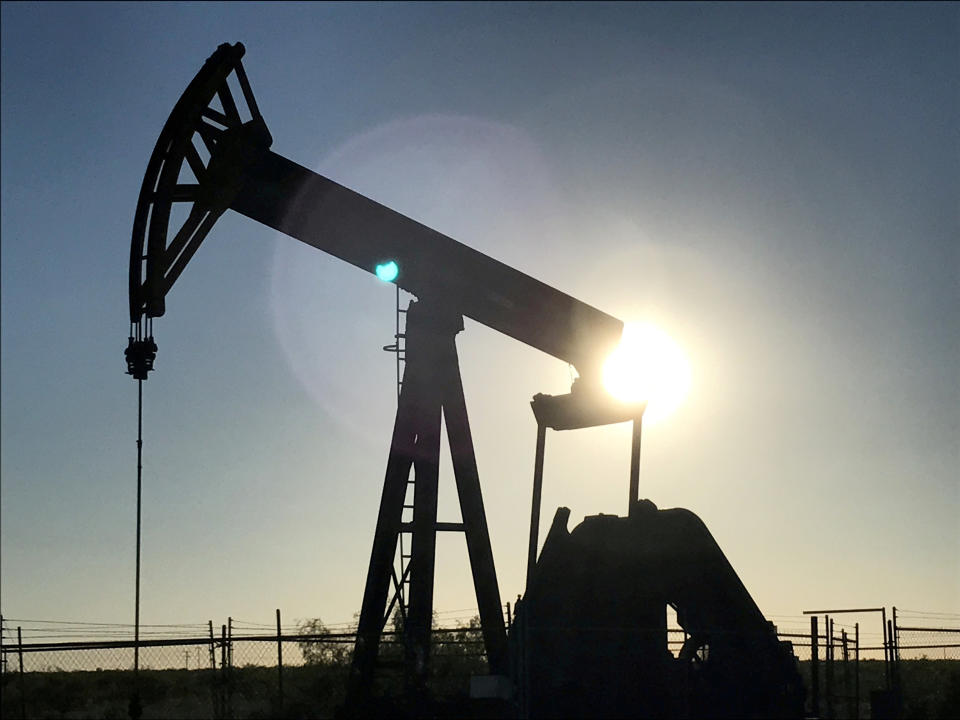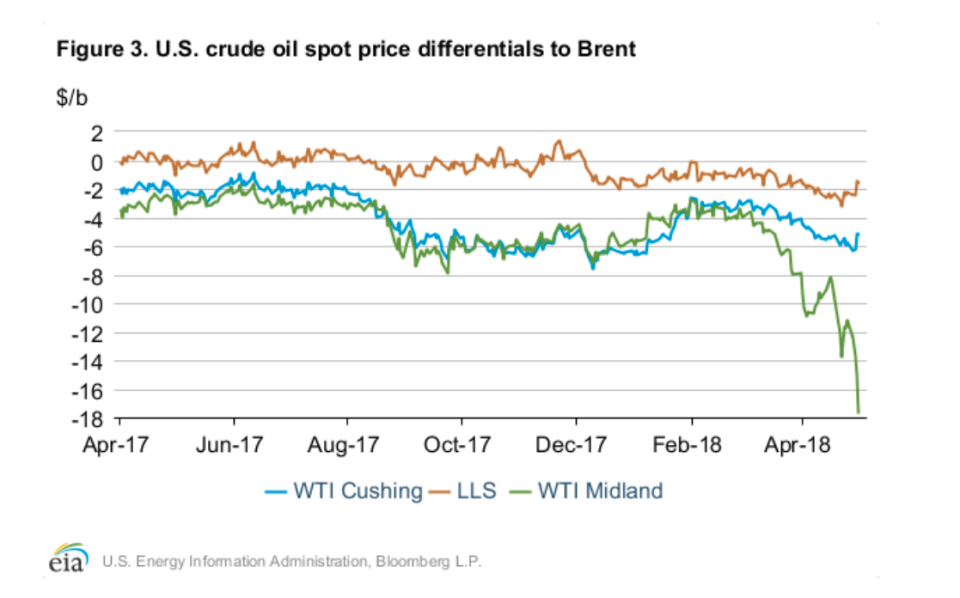West Texas oil is gushing but pipelines can't handle it
Crude oil production in America is on fire. The U.S. has become the world’s largest crude oil producer, and exports have soared to new highs.
But the infrastructure — pipelines that transport fracked oil across the country — in one U.S. oil-rich region hasn’t been able to keep up with the production boom. As a result, producers like ConocoPhillips (COP) and Noble Energy (NBL) have had to adapt. The lack of pipelines in the Permian Basin (the western part of Texas and southeastern part of New Mexico) is forcing producers to relocate rigs and even put the brakes on production until more infrastructure is in place.
“We already hear anecdotally in conference calls of [producers] moving rigs out of the Permian to a place that doesn’t have these issues,” said Jennifer Rowland, a senior energy equity analyst at Edward Jones.

A boom in technological advancements that enabled oil producers to use fracking (hydraulic fracturing) to extract oil and natural gas from shale rock unleashed a massive supply of oil into the markets. But the two main regions that benefited from the fracking, Cushing, Oklahoma, and the Permian Basin, diverged in their pipeline development. Producers in the Permian have been pumping so much oil that they have to sell it at a discount to Cushing to get it through its small congested system of pipelines.
This month, the price difference between WTI Cushing (oil from the Rocky Mountains and Midwest that connects to Cushing, Okla.) and WTI Midland (oil from the Permian Basin) reached above $17 per barrel.

ConocoPhillips said in a conference call last month that they are moving rigs from the Permian to the Gulf Coast for better transportation and pricing. There, the local benchmark LLS, or Louisiana Light Sweet crude is pegged to higher Brent prices because of the Gulf ports’ international exposure.
Meanwhile, Noble Energy is moving some of its production from the Permian to places like the Denver-Julesburg Basin in Colorado, which already has pipelines connecting to the Cushing trading hub.
“Given the industry pressures in the Permian, due to widening basin differentials and service cost inflation, we plan to moderate our activity in the Delaware Basin [within the Permian],” said Noble Energy Chairman and CEO Dave Stover on the latest earnings call. Stover also said he is postponing plans for well completions until late 2019 to align the company’s activities with upcoming pipeline projects in the region.
Other oil companies like EOG Resources Inc. (EOG) are sitting on land and putting a pause on production until pipelines arrives. The company believes regional diversification is important to take advantage of what’s to come.
“What we’ve seen in other basins, as you see the infrastructure get built out, somewhat overbuilt, you don’t want to have too much exposure in one market, because we think going into 2020 in an overbuilt situation you can actually see a lot of strength in the Midland [within the Permian] local market,” said D. Lance Terveen, EOG senior vice president of marketing, in a conference call.
A pipe dream

Major pipeline projects are expected to be completed in mid- to late next year. Magellan Midstream Partners, a pipeline, storage and distribution company, has a Delaware Basin crude oil pipeline project expected to be completed in mid-2019. Plains All American Pipeline, L.P. (PAA) has a $1.1 billion joint venture pipeline project underway that will link the Permian to the Gulf Coast that will be completed in the third quarter of 2019.
“We expect to place multiple gathering and intra-basin de-bottlenecking projects as well as terminaling and storage expansions into service throughout the second half of 2018 and the first quarter 2019,” said Willie Chiang, executive vice president and chief operating officer of Plains All American Pipeline in its second quarter earnings call.
Plains All American has another project, which would link part of the Permian Basin to Houston and have the capacity to transport more than 1 million barrels of crude oil per day, planned with ExxonMobil Corp. that is expected to be completed in 2021. Additionally, Plains All American plans to extend its Sunrise Pipeline system, which currently originates at Midland in the Permian and connects with Colorado City, Tex., by building 180-miles of 24-inch pipeline from Colorado City to Wichita Falls, Tex.
Cheap oil
The lack of infrastructure has led to cheap oil in the Permian. And refineries like Valero Energy Corp. are benefitting from the deep discounts.
“We’re enjoying the benefits of lower crude costs and optionality at our Memphis refinery provided by the Diamond Pipeline [an oil pipeline system that runs from Cushing, Oklahoma to Memphis, Tennessee],” said Joe Gorder, Valero president and CEO, in the company’s conference call. The company announced second quarter profits rose 54% from 2017.
But Rowland said refineries should enjoy the cheap oil while they can. Once pipeline projects are built out, the disparity in regional crude oil prices will eventually wane.
“When pipelines begin to come online mid- to late-2019, the advantage will shift from the refiners to the producers,” she said.
Maylan Studart is a reporter for Yahoo Finance.

 Yahoo Finance
Yahoo Finance 
